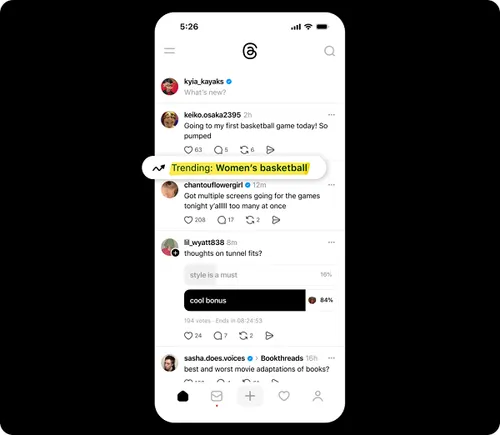Do You Avoid Deep Intimacy In Relationships? You May Have This Attachment Style
If you tend to avoid letting people get too close, read this.


Our editors have independently chosen the products listed on this page. If you purchase something mentioned in this article, we may earn a small commission.
Have you ever wondered why you repeat certain patterns in your relationships? According to what’s known as attachment theory, it may just come down to your earliest childhood experiences. The attachment theory postulates the relationship with your caregiver can map out how you form and create emotional bonds with people later on.
Based on these formative connections, you can fall into four main attachment styles: secure, anxious, fearful avoidant, and dismissive avoidant. The dismissive avoidant attachment style is easy to spot, marked by someone who tends to avoid intimacy and prefer independence.
In the 1950s, British psychologist John Bowlby introduced the seminal attachment concept and proposed that children are born with an innate, biological drive to form attachment with others in order to survive and thrive. Two decades later, psychologist Mary Ainsworth expanded the attachment theory with her “strange situation” study. She observed the different levels of attunement in how caregivers were able to respond to their child’s emotional cues, and from the differences, she outlined the attachment style continuum we know today: from secure attachment style to the insecure attachment styles, which include anxious, dismissive avoidant, and fearful-avoidant.
Where you fall on the spectrum depends on your environment and how your needs were met:
What is a dismissive avoidant attachment style?
The dismissive avoidant attachment style, often called avoidant attachment for short, is an attachment style involving a high level of avoidance in intimacy and a low level of anxiousness about abandonment. When intimacy increases, they express avoidant patterns and engage in distancing tactics out of discomfort.
“People with this attachment style have no problem being single,” explains licensed professional counselor Rachel Sims, LPC. “They usually date many people but lose interest as soon as a sexual partner tries to connect with them on a deeper, emotional level.”
Psychologist Nadine Macaluso tells mbg this behavior likely originated in response to childhood experiences, manifesting a hyper-independent adult who dismisses and devalues connection. The devaluation is motivated by the need to avoid dependency on intimacy.
As such, individuals with a dismissive-avoidant attachment style tend to deny feelings and take their sovereignty to an extreme. They don’t rely on others and don’t want others to rely on them, they keep their innermost thoughts to themselves, and they find it difficult to ask for help.
They’re also sensitive to feeling controlled, Sims adds, and they have a core fear of being hurt that makes it difficult to bond and open up. This makes it tricky for them to date, since for them, the process of knowing and trusting potential partners is marked by pain, confusion, and distress.
How the dismissive avoidant attachment style develops.
“Avoidant children are raised by dismissive parents who regularly minimize the importance of expressing needs for physical and emotional connection. These children learn to turn off their desire to satisfy such needs. Yet children's needs for comfort and connection in the face of threat or pain cannot be extinguished—only defended against,” Macaluso explains.
Because the child cannot rely on their parents to care or soothe them, they cope by burying their emotional needs and instead redirect their focus on rules and tasks to avoid the early pain of not connecting with their parents.
They learned that if they need something, they must attain it for themselves. Over time, Macaluso continues, they learn not to depend on others which makes it difficult to cultivate lasting romantic relationships. “The forced independence develops as a need to avoid feeling rejection and neglect. They become over-attuned to themselves and under-attuned to others in order to need them less,” she says.
Common signs of dismissive avoidant attachment.
1. A history of short flings.
Casual relationships are low-stakes and allow the dismissive avoidant type to feel some intimacy without it being overwhelming. They prefer connections with little obligations in their romantic life. But as soon as a connection deepens via personal questions and emotional demands, the dismissive avoidant person tends to peel back and slow down momentum with work and hobbies. “Avoidant adults typically prefer their social connections to remain surface-level only. If someone starts to push them on this, they close themselves off and retreat pretty quickly,” Sims says.
2. Affection blows hot and cold.
The relationship may start off normally. Yet as soon as the relationship blossoms, the dismissive avoidant starts to back off–which can make their partner question the bond and feel neglected. When the dismissive avoidant partner feels emotionally regulated again, they reach out to re-establish connection, only to repeat the inconsistent pattern because they never solved their underlying vulnerabilities.
3. Nitpicking the relationship.
If someone is able to get close to them, Sims notes dismissive avoidants might try to subconsciously sabotage the relationship by picking up on small things such as their partner’s behaviors, habits, or appearance. “People with [dismissive] avoidant attachment don’t simply break up with other people for no reason. But when their attachment style is triggered, they might feel the need to escape.”
4. Low tolerance for conflict.
Because they don’t fear abandonment (and expect it in many cases), as soon as the relationship gets challenging, dismissive avoidants look for the exit. The partner may feel heartbroken by their cold response, but their distance isn’t intentionally malicious—the dismissive avoidant person is responding to the terror of potential rejection, so they prematurely close off.
Sims notes that the dismissive avoidant attachment style also tends to come with a lot of self-reliance, confidence, and a sense of togetherness. Due to their over-reliance in themselves, dismissive avoidants often have an individualistic, accomplished personality with many priorities that take up their time and attention. They know who they are, the things they like, and have specific goals in life. They tend to be low-maintenance colleagues, friends, and romantic partners since they prefer taking care of themselves and their troubles on their own. The only thing missing is the ability to form deep and authentic emotional ties with others.
6. Views vulnerability as a weakness.
Because they’re inherently uncomfortable with vulnerability, someone with a dismissive avoidant attachment style may judge other people who are overly demonstrative of their affection and emotions. “Their low opinion of people creates a general distrust of others,” Macaluso says. “They are often labeled as narcissists because they think too well of themselves and too poorly of others.”
7. Suppression of emotional experiences.
Sims notes dismissive avoidant people tend to lack awareness of their inner world, emotions, needs, and fears. Although they have a strong sense of self, they mainly project a false self to the world. “They don’t allow others to be there for them and show that they care and love them,” Sims says. Whenever someone moves to close the distance, the dismissive avoidant strives to increase the distance.
8. Minimizes romantic connections.
The dismissive avoidant may secretly want a relationship, but actively resist making love happen because they don’t know how to trust others. Instead of being open to the possibility of connection, they’re likely to enforce strong boundaries that prevent prospective partners from entering their life in a meaningful manner.
Dating someone with a dismissive avoidant attachment.
If you recognize these signs in your partner, know there’s hope. The good news is attachment styles can change through generous and present love – with the self and in relationship with others. Through conscious effort and practice, anyone can adjust their attachment style and move towards security.
Here’s what to know if you’re dating someone with a dismissive avoidant attachment:
1. Encourage them to seek help with a therapist.
The journey with the self starts with the origin. As their partner, you can support them on their journey, but healing their attachment style is an internal process. To foster interdependence in the relationship, the dismissive avoidant may benefit from seeing a therapist on their own to understand their past patterns and how it shows up throughout all of their past relationships. This helps them connect to others safely and improves their secure attachment.
2. Face conflict with grace.
When their attachment style is activated, they’ll want to run away. Instead, encourage them to stay and discuss it with you so they don’t deny their feelings. You can help by creating a space where they can share their emotions without fear of rejection or humiliation. Macaluso says to expect a period of openness and the experience of relief before your partner quickly withdraws once more. During this, she notes the importance of giving them time and space to process their conflicting emotions and to remain available as the secure base they can return to once they are ready for more emotional contact.
3. Help them towards positivity.
Although you can reassure a partner with a dismissive avoidant attachment style, it’s vital for them to develop an internal security about themselves and their positive qualities in relationships. This can start with them developing a compassionate affirmation practice about them as a person (not what they do) and practicing exposure to situations that intensify the connection as a couple.
“Learn positive affirmations and practice repeating them frequently,” Sims advises for the dismissive avoidant. “Notice when you are judging and criticizing others and bring an attitude of acceptance instead—we are all flawed in some way.”
4. Know it’s not about you.
“Understanding how your partner is wired and responding to them lovingly in a way that understands their attachment pattern can help them heal,” Macaluso says. It lets you realize that if you chase your partner, they will outrun you, so it’s better to exercise patience and not make them feel guilty or ashamed of their feelings—which will only reinforce their dismissive avoidant attachment injury.
Healing attachment injury is hard, but not impossible. If your goal is to have a real connection with someone, you have to let them in. “Since attachment wounding happens in a relationship, healing can also occur in a relationship with your partner,” Macaluso says.
This can look like taking calculated risks with your partner by sharing your needs and allowing vulnerability in small yet consistent increments. “Say yes to situations you might be inclined to avoid, such as going out as a couple or socializing with others,” Sims says. Other compromises can look like the dismissive avoidant identifying themselves as part of a couple by using “we” instead than “I” or “you.”
Being able to openly communicate with your partner will be an essential practice to reform how you trust others in relationships. “Practice empathy when confronted by your partner by trying on their perspective [and] expand your awareness beyond yourself and your thoughts by identifying small things your partner does for you,” she suggests.
A mindfulness practice—the skill of being present with yourself and the present moment—will also help you feel your emotions as they come up, and the potential excitement you have about connecting with a partner. Macaluso recommends allowing yourself to experience those feelings and being OK with the longing of wanting love.
The true basis of your attachment style is really marked by the quality of how you behave and interact in your most intimate relationships. While your childhood may have influenced your attachment style, you still have a say in how it develops moving forward.
The beauty of doing inner work is that you can arm yourself with the tools and resources to cope with your dismissive avoidant attachment style. You can heal your attachment issues by letting people in and building healthier habits through sustained and consistent practice.

 Aliver
Aliver 































